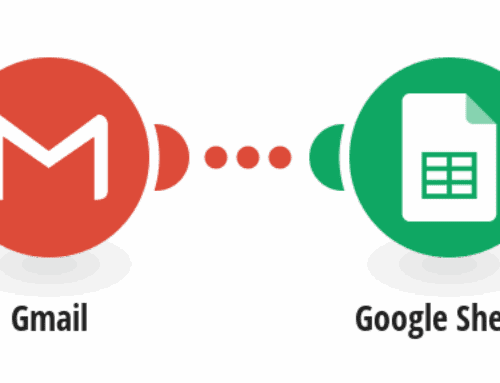Integrating Shopify with SleekFlow for Enhanced Customer Relationship Management
Introduction
In today’s fast-paced e-commerce environment, optimizing customer relationship management (CRM) is crucial for maintaining a competitive edge. Integrating your online store with powerful CRM tools can streamline operations and improve customer satisfaction. One effective strategy is linking Shopify, a leading e-commerce platform, with SleekFlow, a robust CRM solution. This integration facilitates seamless data flow, ensuring you have the right information at the right time to make informed decisions.
This article explores how integrating Shopify with SleekFlow can enhance customer interactions and streamline your business processes. We will delve into how this combination can automate tasks, improve communication, and ultimately drive sales. By the end of this read, you’ll understand why this integration might be the missing piece in your CRM strategy puzzle.
Understanding the Role of Shopify in E-commerce
Shopify has established itself as a leading force in the e-commerce industry, offering businesses an easy-to-use platform to build and manage their online stores. More than just a storefront, Shopify provides a suite of tools that aid in product management, order processing, and even marketing. With its customizable templates and extensive app ecosystem, businesses can create unique shopping experiences tailored to their brand and audience.
One of Shopify’s standout features is its scalability. Whether you’re a small startup or a large enterprise, Shopify can cater to your needs. It’s designed to grow with you, supporting an increasing volume of transactions without compromising performance. Such capability positions Shopify as a reliable ally in the e-commerce landscape, making it a popular choice among businesses worldwide.
The Importance of CRM in E-commerce
Customer Relationship Management (CRM) is critical in e-commerce because it helps businesses manage their interactions with current and potential customers. At its core, CRM systems are designed to improve business relationships, focusing on customer retention and driving sales growth. In a digital world where customer expectations are high, a sound CRM strategy can differentiate your brand from competitors.
Effective CRM tools consolidate customer information across all touchpoints, providing insights into buying behaviors, preferences, and feedback. This 360-degree customer view enables businesses to tailor their marketing efforts, personalize communications, and develop products that resonate with their target market. In essence, CRM isn’t just about managing contacts; it’s about nurturing relationships and building trust.
Introducing SleekFlow: A Powerful CRM Tool
SleekFlow is a comprehensive CRM solution that integrates communication, sales, and marketing channels into one unified platform. Its primary aim is to streamline workflows and improve team collaboration by centralizing customer data. With features like task automation, analytics, and custom workflows, SleekFlow empowers businesses to operate more efficiently and effectively.
The platform is known for its user-friendly interface and versatility. It supports integrations with various applications, allowing businesses to tailor the system to their specific needs. By leveraging SleekFlow, companies can enhance their customer service, optimize sales processes, and boost overall productivity. It’s no wonder that SleekFlow is becoming a go-to option for businesses looking to elevate their CRM strategies.
Benefits of Integrating Shopify with SleekFlow
Integrating Shopify with SleekFlow offers numerous benefits that can transform your e-commerce operations. First and foremost, it automates the synchronization of customer data between the two platforms. This means that any new order in your Shopify store automatically creates a contact in SleekFlow, eliminating the need for manual entry and minimizing errors.
Additionally, this integration allows for better management of customer interactions. With all customer information readily available in SleekFlow, teams can provide more personalized and timely responses. This level of service can significantly enhance customer satisfaction and foster loyalty, translating into repeat business and increased revenue.
How to Set Up Shopify and SleekFlow Integration
Setting up the integration between Shopify and SleekFlow is a straightforward process, thanks to platforms like Make.com that offer pre-built templates to ease the transition. First, you’ll need to sign up for both Shopify and SleekFlow accounts if you haven’t already. Once your accounts are active, head over to Make.com and search for the appropriate template to integrate these platforms.
After finding the template, follow the setup instructions provided. Typically, this involves authorizing both apps to connect through your Make.com account and configuring settings to match your business needs. After setting everything up, perform a test order on Shopify to ensure the integration is working correctly. With this step completed, your business will benefit from a more streamlined CRM process, enabling better customer management.
Overcoming Potential Challenges
As with any technology implementation, there may be challenges when integrating Shopify with SleekFlow. The most common issues include data discrepancies and connectivity problems. To mitigate these risks, ensure all systems are updated and that staff are trained on the new workflow. Regular audits of customer data can also help identify and rectify any inconsistencies quickly.
Furthermore, it’s essential to back up all critical data before initiating the integration. This precaution ensures that even if something goes awry during the process, you won’t lose valuable information. Finally, don’t hesitate to seek support from SleekFlow or Shopify’s customer service teams if you encounter persistent issues. They can provide guidance and solutions to help your business make the most of this powerful integration.
Conclusion
Integrating Shopify with SleekFlow is a strategic move for businesses aiming to enhance their CRM capabilities. This powerful synergy not only automates data synchronization but also enhances customer interaction and service delivery. As a result, businesses can expect improved operational efficiency, better customer satisfaction, and potentially increased sales.
If you’re looking to take your e-commerce operations to the next level, this integration could be a game-changer. With the right setup and ongoing management, you can unlock the full potential of your Shopify and SleekFlow platforms, positioning your business for long-term success.
FAQs
Can existing customer data in Shopify be imported into SleekFlow?
Yes, existing customer data in Shopify can be imported into SleekFlow using data import tools or by leveraging integration platforms like Make.com which facilitate this data migration process.
Will the integration work if I have multiple Shopify stores?
The integration can be configured to handle multiple Shopify stores, but it may require additional setup and configurations within the SleekFlow platform to manage each store’s data separately.
Is technical expertise required to set up the integration?
While some technical understanding can be beneficial, platforms like Make.com provide user-friendly templates and guides that simplify the integration process, so extensive technical expertise is not mandatory.
What happens if an order fails to sync from Shopify to SleekFlow?
If an order fails to sync, it’s essential to troubleshoot possible connectivity issues and verify if both Shopify and SleekFlow are authorized properly within the integration platform. Also, contacting support may provide additional solutions.
Are there additional costs associated with integrating Shopify with SleekFlow?
While the integration platform Make.com may offer free trials, there could be subscription fees involved for extended services. It’s advisable to review any potential costs associated with both Shopify and SleekFlow integrations ahead of time.









